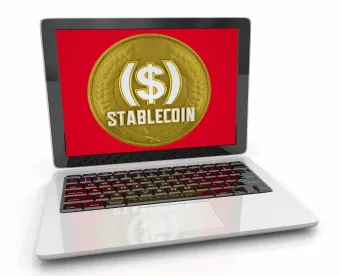On Nov. 1, 2021, the Office of the Comptroller of the Currency and the Federal Deposit Insurance Corporation (FDIC) joined with the president’s Working Group on Financial Markets (PWG) to release the much-anticipated Report on Stablecoins (the “Report”). The Report (i) discusses the background of stablecoins and their functions, (ii) identifies and assesses the risks and certain regulatory gaps of stablecoins, and (iii) makes certain legislative and other recommendations to address such gaps and perceived risks.
This GT Alert Covers the following:
-
What are stablecoins, and how they are created, redeemed, transferred, and stored.
-
The risks and regulatory gaps related to stablecoins identified in the Report.
-
PWG’s recommendations to Congress on legislation to address market risks potentially created by stablecoin transactions.
-
How the agencies forming the PWG intend to continue to use their existing authorities to address potential prudential risks related to stablecoins.
What Are Stablecoins?
Stablecoins are digital assets backed by other assets (such as fiat currency (government-issued currency that is not backed by a physical commodity, such as gold or silver, but rather by the government that issued it), gold, or other reference assets), which generally maintain a stable value relative to such reference assets. The market capitalization of stablecoins issued by the largest stablecoin issuers exceeded $100 billion as of November 2021. This amount reflects a nearly 500% increase over the preceding 12 months. See, Total Stablecoin Supply, The Block (Oct. 18, 2021). In the U.S. market today, stablecoins are primarily used to facilitate trading, lending, or borrowing of other digital assets, predominantly on or through digital asset trading platforms
-
Creation and Redemption: Stablecoins generally are created, or “minted,” in exchange for fiat currency that a stablecoin issuer receives from a user or third party. Some stablecoin issuers offer to users a promise or expectation of redeeming a stablecoin at par, thus maintaining a stable value relative to fiat currency.
-
Redemption rights vary depending on the arrangement, with some users having no limitations on the amount of stablecoins that may redeemed for a fiat currency, while others have minimum redemption amounts that must be met before the issuer processes a redemption request.
-
In some stablecoin arrangements, reserve assets include deposits at insured depository institutions, but this does not mean that deposit insurance currently extends to the stablecoin user. For example, if the stablecoin issuer deposits fiat currency reserves at an FDIC-insured bank and does so in a manner that meets all the requirements for “pass-through” deposit insurance coverage, the deposit generally only would be insured to each stablecoin holder individually for up to $250,000. Without “pass-through” protection, the deposit generally would only be insured to the stablecoin issuer up to the $250,000 limit.
-
Even if the supposed value of stablecoins in circulation is equal to the value of the reserve assets, other creditors may have a claim on the reserve assets that competes with the unsecured claims of stablecoin holders.
-
Transfer and Storage: Stablecoin arrangements typically facilitate the transfer of coins between or among users of the stablecoin arrangement by having issuers and other participants record the transfer either “on the books” of the wallet provider (for transactions between users of the same wallet provider) or on the distributed ledger (for transactions involving users of different wallets).
-
Participants in stablecoin arrangements may be able to process stablecoin transfers internally. For example, a wallet provider could hold stablecoins on behalf of customers and allow its customers to send or receive stablecoins without interacting with the distributed ledger.
-
At various stages of the transfer process, the successful transfer of stablecoins might depend on wallet providers, node operators, and various other intermediaries and technologies.
The Report recognizes that stablecoins, if well designed and appropriately regulated, could become widely used by households by providing faster, more efficient, and more inclusive payment options. According to Secretary of the Treasury Janet L. Yellen, “absent appropriate safeguards, stablecoins present potential risks to users, the financial system, and the economy.” See “Remarks by Under Secretary for Domestic Finance Nellie Liang to the Stanford Graduate School of Business” (Nov. 1, 2021).
Stablecoins Risks and Regulatory Gaps
The Report identifies the following risks and regulatory gaps related to stablecoins:
-
Payment System Risks: Payments related to stablecoin transactions face many of the same basic risks as traditional payment systems, including:
-
credit risk;
-
liquidity risk;
-
operational risk;
-
risks arising from improper or ineffective system governance; and
-
settlement risk.
The foregoing can pose risks not only to participants of stablecoin transactions but also to the broader financial system. For example, unlike traditional payment systems where risk is managed centrally by the payment system operator, some stablecoin arrangements feature decentralized decision-making and complex operations where no single organization is responsible or accountable for risk management and resilient operation of the entire arrangement. Additionally, deficiencies in information systems or internal processes, human errors, management failures, and disruptions from external events are operational risks that may result in the reduction, deterioration, or breakdown of service and, therefore, disrupt the ability of users to make payments, which can in turn disrupt economic activity.
-
Loss of Value - Risks to Stablecoin Users and Stablecoin Runs: While the confidence in stablecoins as a reliable means of payment or store of value may arise in part from their redeemability, the Report identifies the following factors that the drafters contend may undermine user confidence in stablecoins:
-
use of reserve assets that could fall in price or become illiquid (which may be amplified by a lack of transparency with respect to the composition of reserve assets);
-
failure to appropriately safeguard reserve assets;
-
lack of transparency regarding the redemption rights of stablecoin holders (such as whether holders have a direct claim on reserve assets or whether holders become creditors with a competing claim on such assets); and
-
operational risks related to cybersecurity and the collecting, storing, and safeguarding of data.
-
A combination of these factors could lead to a stablecoin’s failure to perform according to expectations and harm users of that stablecoin. The mere prospect of a stablecoin not performing as expected could result in a “run” on that stablecoin, resulting in fire sales of reserve assets.
-
Risks of Scale - Systemic Risk and Concentration of Economic Power: The Report highlights three sets of policy concerns given that the growth of stablecoins may reflect economies of scale and scope:
|
-
a stablecoin issuer or a key participant in a stablecoin arrangement (such as a custodial wallet provider) could pose systemic risk – meaning that the failure or distress of that entity could adversely affect financial stability and the real economy;
-
a single stablecoin that becomes widely adopted, absent interoperability standards for stablecoins and stablecoin arrangements, presents concerns about anti-competitive effects, for example, if users of that stablecoin face undue frictions or costs in the event they choose to switch to other payment products or services.
The Report asserts that the combination of these policy concerns may have detrimental effects on competition and lead to market concentration in sectors of the real economy.
-
Digital Asset Trading Platforms and DeFi Risks: Digital asset trading platforms and decentralized finance (DeFi) depend on stablecoins to facilitate borrowing, lending, and trading. (DeFi is a system by which financial products become available on a public decentralized blockchain network, making them open to anyone to use, rather than having to go through middlemen like banks or brokerages.) However, the Report contends that these digital asset trading platforms and DeFi arrangements present risks of particular focus to agencies such as the U.S. Department of Justice (DOJ), U.S. Securities and Exchange Commission (SEC), and the Commodity Futures Trading Commission (CFTC), including:
| risks of fraud, misappropriation, and conflicts of interest, including those arising from misleading disclosures to the market, misuse of inside information, and manipulative trading activities; |
-
money laundering and terrorist financing risks; and
-
excessive leverage facilitated by use of stablecoins as collateral on unregulated or noncompliant trading platforms.
-
excessive leverage facilitated by use of stablecoins as collateral on unregulated or noncompliant trading platforms.
Report RecommendationsTo address these risks, the Report recommends that Congress act promptly to enact legislation to ensure that payment stablecoins are subject to a federal prudential framework on a consistent and comprehensive basis. The Report’s recommendations include the following:
ConclusionWhile the scope of the Report is limited to stablecoins, U.S. financial regulatory agencies and Congress continue their study of digital assets and other innovations related to cryptographic and distributed ledger technology. The Biden administration and the U.S. financial regulatory agencies have stated that they will continue to collaborate closely on ways to foster responsible financial innovation, promote consistent regulatory approaches, and identify and address potential risks that arise from such innovation. However, debate continues throughout industry and the financial regulatory regime as to what level of oversight and regulation may be appropriate. On Nov. 17, 2021, at a conference held by the Federal Reserve Bank of Cleveland and the Office of Financial Research, Federal Reserve Governor Christopher Waller warned against excessive regulation of stablecoins, noting that “regulatory oversight can insulate banks from some forms of direct competition” and “limit free entry into at least some of the markets in which banks operate.” Congress and regulators will need to balance the need for oversight with the risk of stifling innovation and driving business outside of the United States. William E. Turner II also contributed to this article. |







 />i
/>i


